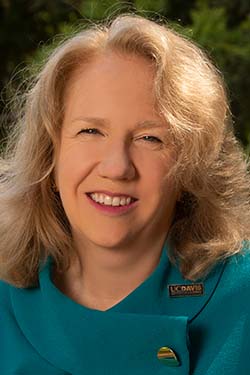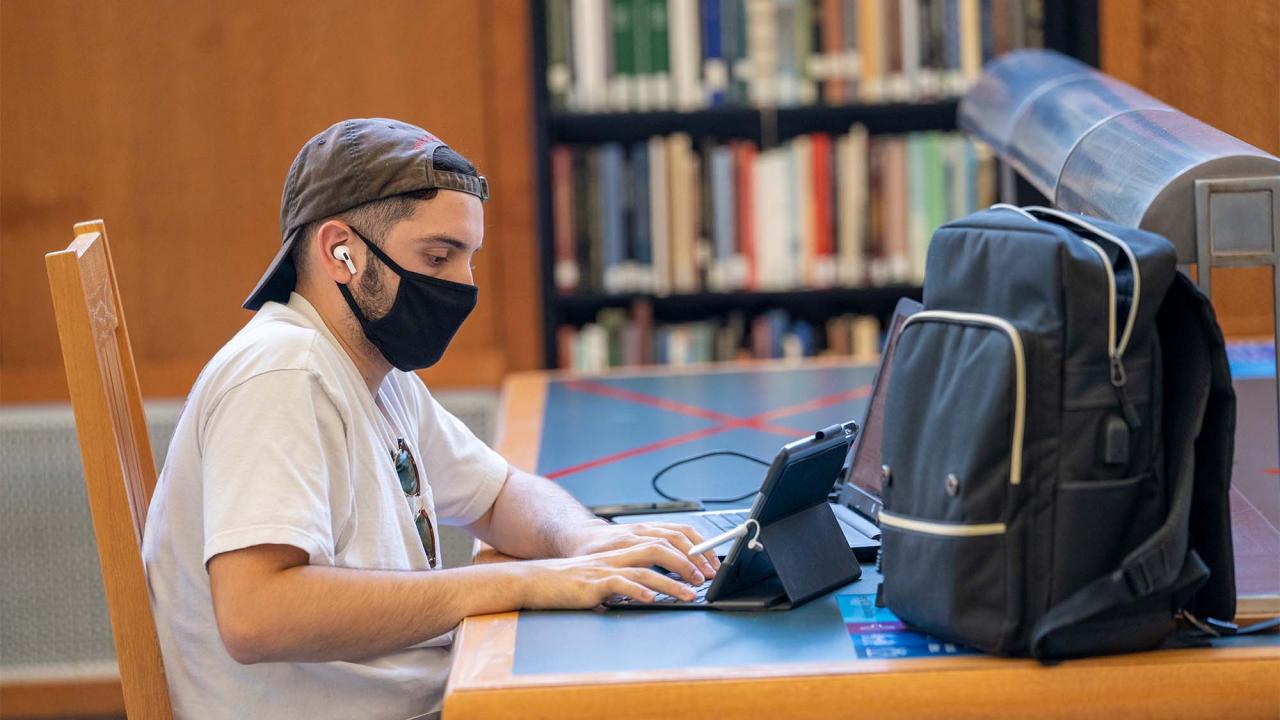Dear members of the UC Davis community,
I write to thank you for coming together to make a return to in-person operations possible, to provide you with an update about where our preparations stand, and to recognize that this is a moment of high anxiety for our community. Above all, I want to reassure you that Chancellor May and I are monitoring the pandemic closely. The most up-to-date information indicates that the Delta surge seems to have crested and may finally be receding. The case rate in Yolo County has recently begun declining. The same is true for the State of California and much of the United States, particularly those parts of the nation that have high vaccination rates.
Regardless, we want you to know that our highest priority remains the health and safety of both individuals and the public. That commitment, which informs every decision we make, includes preventing further spread of COVID-19 — while, at the same time, recognizing the benefits and well-being associated with returning to in-person operations. We want people to come back to our vibrant and beautiful campus, where our entire community can join together to fulfill the University of California’s core mission: producing and sharing knowledge, teaching and learning, and serving the people of this state and the world beyond.
Trusting in science

We have said many times that we have science on our side. We would add that circumstances are very different than they were a year ago, when we decided to operate remotely. Vaccines are available and effective. We have mask and vaccine mandates. We have free testing for all members of our campus, our community, and our loved ones. We have effective contact tracing and other infection surveillance strategies, such as wastewater monitoring.
We are relying on every health and safety measure that we can deploy on our campus, including leveraging the enormous expertise of our faculty. To that end, we recently enlisted the UC Davis EpiCenter for Disease Dynamics to provide predictive modeling regarding potential classroom transmission. We are pleased to report that this modeling indicates that our community, because of our vaccine and mask mandates and our comprehensive commitment to public health and well-being, will drastically reduce the risk of SARS-CoV-2 transmission even in very large and crowded classrooms. These results, especially when read in concert with a recent article by David Leonhardt in The New York Times, suggest that while fears of returning to in-person operations are entirely understandable, accurate data and science-based information can help to address the majority of these concerns.
To that end, we continue to track developments on campuses around the state of California and throughout the United States. We note the positive impact that the conditions we describe above—mask and vaccine mandates and a robust testing and mitigation regimen — will have on our experience here. We are proud that UC Davis surpasses most other universities and communities in our ability to identify and address COVID cases, as well as to prevent them.
Ready for changes
Still, if it at any time it becomes necessary for us to pivot to remote instruction to keep our community healthy, that is exactly what we will do. Should we need to make that decision, we will do so based on our case positivity rate, our number of students in isolation, and by working closely with Yolo County and Sacramento County public health officials in conjunction with the University of California Office of the President. For now, though, the data indicate that returning to in-person instruction and learning is appropriate and feasible.
The best place to find current information and also provide feedback about our plans continues to be the Campus Ready website, which includes a list of FAQs. These FAQs are a living document. Based on public health guidelines, our shared experience, and conversations with members of our community, the FAQs will evolve over time. We have already received a great deal of constructive feedback and have, accordingly, begun making changes. Date stamps and notes about updates will indicate where guidance has shifted. For example, working with our partners in the Academic Senate, instructors of record and TAs now have added flexibility in how they can deliver the curriculum if they or their dependents are required to isolate after contracting COVID-19, are required to quarantine after exposure to COVID-19, or need to care for a family member due to COVID-19 infection or exposure. Similarly, instructors will be able to allow their teaching assistants to temporarily perform teaching responsibilities remotely in such cases. As noted above, if you have any questions or comments about the FAQs, we encourage you to use the Feedback for Fall portal on the Campus Ready website.
Vaccine rates are encouraging
Turning to another recent change in policy, in an effort to keep every member of our community healthy through the implementation and enforcement of our vaccine mandate, we began messaging noncompliant students earlier this week. If students do not comply with our vaccine mandate policy, they will first face a registration hold and then, prior to the beginning of undergraduate instruction, be disenrolled. Looking to the undergraduate community more broadly, although we have exceeded our enrollment targets for incoming first-year and transfer students, our overall student population should, because of the impact of the pandemic and a liberalized Planned Educational Leave Policy, remain fairly consistent as we return to campus this fall. As a result, our facilities should typically not be more crowded than they would have been in years prior to the pivot to remote operations. In the event that students are impacted by COVID, our campus has a number of provisions in place to support them, including housing designated for quarantine and isolation. Instructors of record are being encouraged to accommodate these students to the greatest extent possible.
With regard to questions of ventilation and air quality, the campus has evaluated HVAC systems serving all classrooms and is modifying these systems to supply 100% outside air (no recirculation) and upgrade to MERV 13 filtration wherever possible. Where these upgrades are not yet practicable, we are in the process of procuring CARB-certified state-of-the-art air purification units using recommendations from our Western Cooling Efficiency Center.
We are very happy to report that our campus community has crossed the 90% threshold for vaccination rates. We look forward to that number climbing higher as we near the beginning of undergraduate instruction. Students have already begun moving into the residence halls, and COVID case and isolation rates remain remarkably low. Our numbers are similar to those found on the Berkeley and Merced campuses, where undergraduate instruction began in August and where students have done a very effective job complying with face-covering and vaccination requirements. The UC Davis Schools of Law, Medicine, Veterinary Medicine and the Graduate School of Management have already resumed in-person instruction. Vaccination rates among enrolled students are close to 100%, and COVID case rates have been very low.
I want to close by saying how grateful I am to be part of this extraordinary community and that Chancellor May and I remain dedicated to its health and well-being. This is a terribly difficult moment for all of us, but we are certain that there are better days ahead. We cannot wait to greet you in person in the CoHo, on the Quad, or perhaps in the stacks of Shields Library, the lobby of the Mondavi Center, or a gallery of the Manetti Shrem Museum. We cannot wait to learn about the life-changing discoveries that come out of your laboratories, the culture-shifting art that you make in your studios, or the field-defining books and articles that you write in your offices. We cannot wait to dodge bicycles in the roundabouts as our students make their way across campus. We cannot wait to be back with you, together, this fall.
All the best,
Mary Croughan
Provost and Executive Vice Chancellor
